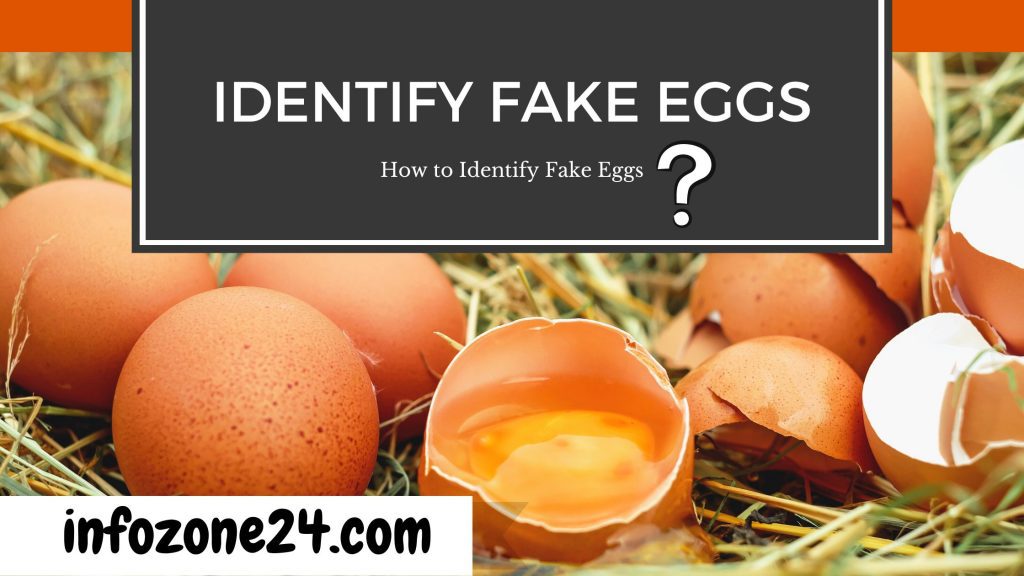Probably, you will be astonished to know that people are buying fake eggs from the market and eating regularly as they are not been well informed and people do not know how to identify fake eggs as well. Fake eggs are looks like real chicken eggs. It is known as chemical eggs also.
Fake eggs are commonly available now in China as well as outside of China – Bangladesh, India, Thailand, Pakistan etc. China is exporting fake eggs to Bangladesh, India etc countries. People are not aware, that is why, they are being cheated. Let us see, how to identify fake chicken eggs from the real ones. This post will help you step by step.
Manufacturing Process of China Fake Eggs:
An egg has three parts: (1) Egg Shell (2) Egg White (3) Egg Yoke
Fake egg’s shell is made of Calcium Carbonate mainly. Egg Yolk and Egg White are made of Sodium alginate, Alum, Gelatin, Calcium Chloride (NaCl), water and food color.
Process to Make Artificial Fake Eggs Step by Step:
- At first, pour an specific amount of Sodium Alginate into Warm Water
- Then, mix them well and mix it again with Gelatin together with benzoic acid, alum and other chemicals to make the proper Egg White.
- After that, add lemon yellow food color with the mixture in the other pot to make Egg Yolk.
- Then, mix Calcium Chloride with that mixture in the another pot to form egg mixture into the mold to produce the Fake Egg Membrane.
- Fake Egg shell is mainly made of Paraffin Wax, Gypsum Powder, Calcium Carbonate and other materials.
Fake eggs are full of chemicals and that is why, it is known as Chemical Eggs. The main ingredient Calcium Alginate is a gel type. Alum, gelatin etc are used as additives and as auxiliary agents. There are national standards on the use of additives and the amount of them are clearly defined. In the fake eggs, they are the major elements. They are not beneficial to the human body at all. Artificial eggs/Fake eggs has little or no nutrition value compare with the real egg.
How to Identify Fake Eggs from Real Chicken Eggs
After breaking the fake egg shell and opening the egg, egg white and egg yolk will soon mix together.
- Fake egg’s shell is a little bit shiner than the real egg, but it is not very remarkable/noticeable.
- When you touch the fake egg by hand, you will feels a little bit rougher than the real egg.
3.When you shake the fake egg (before opening), it will make some noises since water overflows from the solid agent.
- Original chicken egg smells a little bit like raw meat.
- Tap the fake egg lightly, the n, you will see, the real egg makes a more crisp sound than the fake egg.
- After opening the fake egg, shortly, egg yolk and egg white of the fake egg will melt together while real egg not. This is because of the egg yolk and egg white are made of the same raw materials/chemicals.
- When you fry a fake egg, the yolk will be spread without being touched whereas real egg does not behave like that.
Production Cost Comparison of Fake Eggs & Real Eggs:
Let’s calculate: 1kg of Real Egg worth about 81 BDT (6.5 RMB). But, only 1kg of Sodium Alginate costs about BDT 525 (42 RMB). By BDT 525 (by 1 kg material), you can make 150kg of fake eggs plus other costs. So, 1kg of fake eggs cost about BDT 6.8 (0.55 RMB) to make which is very cheap.
Production Details of Chemical Egg:
Use sodium alginate which has been soaked in aqueous, adjusting the concentration, stirring evenly. Soon it will look slightly white and transparent, and should have the same viscosity as the real egg white. This is the main part of the “egg”.
Separate part of this liquid and add a small amount of lemon yellow food coloring, adjust the color depth to look like the color of egg yolk. This is now the prototype of the “egg yolk”.
Fix the “egg yolk”. Then, pour the liquid into egg yolk shaped container, and promptly add calcium chloride dissolved in water. The outside of “Egg yolk” rapidly solidify and form a layer of transparent material. After 1 minute, “egg yolk” will be formed.
Pour “egg yolk” into “egg shell”. Put solidified artificial egg yolk into artificial egg white, the egg’s basic “content” is done. Finally put “egg yolk” and “egg white” into “egg shell” made of calcium carbonate. After seal the opening, an “egg” produced by raw material and chemicals is done. The entire production is less than 5 minutes, which is much more efficient than waiting for a hen to lay an egg.
The following are some other information:
| Composition | Side effects and harms | Usage |
| Glucolactone | Metabolism disorder | Solidifier |
| Benzoic acid | Harmful to brain, nerve cell. May cause liver dieses, senile dementia. | Preservative |
| Calcium Chloride | May cause nerve, liver dieses. May affect ability to produce blood. | Egg Shell |
| Cellulose | Metabolism disorder | Additive |
| Alum | May cause nerve, liver dieses. May affect ability to produce blood. | Softener |
| Amino Acid | Metabolism disorder | Additive |
| Food coloring | “Egg yolk” color | |
| Sodium alginate | “Egg white” and “egg yolk” | |
| Gelatin | “Egg white” and “egg yolk” |
Pour “egg yolk liquid” into the mold about 2/3 full, and put it into calcium chloride water. Shake it slightly so that egg yolk appears to have a thin layer of membrane. Soak the “egg yolk” in calcium chloride water for one hour, then wash it and dry it for later use.
Pour “egg white liquid” into the mold about 1/3 full, then put in the “egg yolk”, and add some more “egg white”. Put this into calcium chloride water again and shake it slightly. A whole egg without the shell will start to appear. Then let the “naked egg” harden for an hour, then wash it and dry it.
Put a sewing line through the “egg” and use it to dip the egg into liquid made of beeswax and calcium carbonate. Immerse and repeat several times, until a dry shell is formed then immerse it in cold water and pull the sewing line out. Now you put an “egg shell” coat on the “fake egg” and you are done.
Some artificial eggs may be healthier than others, so it’s important to read the ingredients list and nutrition facts before purchasing.
Generally speaking, however, most artificial eggs are lower in calories and fat than regular eggs, and they also contain more protein. This can make them a good option for people looking for a healthy breakfast or snack option. Just be sure to avoid any brands that contain unhealthy additives or preservatives.
There are a few different reasons that manufacturers might produce fake eggs.
One possibility is that the eggs are meant to be used as ingredients in other foods, like cake batter or cookie dough. In these cases, the eggs are usually made from some type of vegetable oil combined with a food dye or colorant that makes them look like eggs.
Another possibility is that the fake eggs are meant to be sold as Novelty Items. These eggs are usually made from some type of plastic or rubber and can be filled with things like candy, small toys, or even money.
There are no fake eggs for vegans. However, there are vegan egg replacers on the market. These products are made from plant-based ingredients and they work to replace eggs in recipes. Some popular brands include Ener-G Egg Replacer and Bob’s Red Mill Egg Replacer.
Yes, fake eggs are real in China. They are made from a mixture of chemicals including calcium carbonate, sodium alginate, and potassium aluminum sulfate. The fake eggs are made by combining the chemicals with water and then beating them into an egg-like consistency.
The fake eggs are then boiled, fried, or cooked in any way that you would cook a regular egg. They have a similar appearance to regular eggs and they also have the same taste and texture. The only difference is that they are not as nutritious as regular eggs because they do not contain any real protein or fat.
Conclusion:
Fake Eggs will last for about 100 years. Here we already discussed about the making processes of artificial eggs and How to identify fake artificial China eggs from real chicken eggs.
Click to See the video on how to identify fake eggs
Read Now: 8 BEST FOOD CHOICES IN PREGNANCY IN 2021



